Studies On Residential Power Line Noise - Part 4- PS Audio Premier SC Power Cord

DarqueKnight
Posts: 6,765
Introduction
PS Audio's best power cord, the xStream Premier SC, was evaluated against its second best, the xStream Statement SC.
Here are links to the previous parts of this series: Part 1, Part 2, and Part 3.

Figure 1. Two power line serpents face off.
Listening Evaluation Part 1 - Premier SC On Power Amps
A 2 meter Premier SC was compared to a 2 meter Statement SC's between my Parasound Halo JC 1 monoblock amplifiers.
Specs:
Effective Wire Gauge:Premier SC-7 AWG , Statement SC-8 AWG .
Construction: Premier SC-75% PCOCC* Copper, 25% Silver, Statement SC-PCOCC Copper. Both feature ferrite impregnated jackets with multiple shielding.
Weight: Premier SC-3.2 pounds, Statement SC-2.8 pounds.
Retail Cost (2m length): Premier SC-$1793, Statement SC-$629. The Premier is 2.85X the cost of the Statement.
The Premier SC took a while to settle down. Immediately after installation it was unpleasant to listen to: an overall veiled sound, bright "tizzy" highs, compressed sound stage height and depth, slow, muddy bass, diminished image weight and significant loss of bass tactility. The only good thing heard was the apparently louder sound which was evidence of a lowered noise floor.
After 8 hours, the tizzy highs were gone and the bass was more tactile, but the sound was still bad overall.
After 40 hours, I could stand to listen to my system again. I went back and forth between the Premiers and Statements and the Premiers had a bit more image weight and bass impact and the veiling and sound stage constriction was gone. At this point, I was not impressed and did not think the Premier's very modest sonic improvements justified their nearly 3X premium over the Statements.
70th hour-no change.
100th hour-no change. From my listening notes: "You're still not worth the extra money. Looking forward to sending you back."
124th hour. Things now get interesting when going back and forth between the Premiers and Statements. The Statements now sound veiled. I now hear more depth and previously unnoticed details with the Premiers. I put a Statement on the left amp and a Premier on the right amp. Images in the center were shifted slightly to the right with apparently much louder volume on the right. When I panned the balance control left to right, the sound pressure level meter registered the same for both sides, but the volume sounded significantly louder on the right. Some ambient information from the recording space was diminished or altogether missing on the left side. The Premier's bass was more tactile, heavier and articulate. With the Premiers on both sides, the sound stage was deeper with more layering and front to back space between images. The sound was more three-dimensional and holographic overall.
150th hour-no change. I decided to order 1.5 meter Premiers (for evaluation only ) for the SACD player, line level preamp, and phono preamp. I wanted to find out if the Premiers would make a significant difference when placed between the Power Plant Premier regenerator and my source components and preamps.
) for the SACD player, line level preamp, and phono preamp. I wanted to find out if the Premiers would make a significant difference when placed between the Power Plant Premier regenerator and my source components and preamps.
268th hour-going back and forth between the Premiers and Statements again. I'm trying to find a reason to keep the Statements, but I can't. Diminishing returns did kick in: the cost differential was nearly 3X but my sound stage improved only 2X.
I speculated that there would be a minuscule, if any, improvement by replacing the Statement SC between the wall and the Power Plant Premier regenerator. PS Audio confirmed this. When the additional Premier SC cables arrived, I didn't bother to test my hypothesis.
Listening Evaluation Part 2 - Premier SC On Source Components and Preamps
There wasn't a lot of unpleasantness this time. Listening to my analog and digital sources revealed heavier, more tactile bass but with less detail and articulation, further lowering of the noise floor, a bit more depth, a bit lowered sound stage height and more clarity and detail in the treble, but not more brightness. I noticed that some recordings that had sibilant vocals were more pleasant to listen to and that the sibilance was gone on some of them. Drums had a more natural sound.
After 50 hours, I went back and forth with the Premier SC and Statement SC on the SACD player. With the Premier, I heard a big improvement in the rendering of piano and synthesizer. They both took on a thicker, fuller sound with more note decay. Transients of drum licks were sharper. Three-dimensionalism was more enhanced to the same degree as when the Premiers replaced the Statements on the power amps. The sound stage height reduction and small loss of bass detail and articulation that I initially heard was now gone.
More improvement, yet still with diminishing returns. The nearly 3X the cost but only 2X improvement ratio was maintained. I tried to rationalize sending the second batch of Premiers back, but I couldn't do it because they provided $uch Good $ound.

Figure 2. Ok...you win...for now.;)
Measurements
Noise spectrum measurements were taken after listening evaluations were completed.
The power spectrum (Fast Fourier Transform) plots from 0 Hz to 500 Hz for the wall socket, Statement SC, and Premier SC used with the right JC 1 amplifier are given in figures 3 through 5. Everything except the large 60 Hz spike on the left is considered to be nasty, filthy, NOISE. Each vertical square on the plots represents 10 dB of amplitude. Each horizontal square represents 50 Hz of frequency.
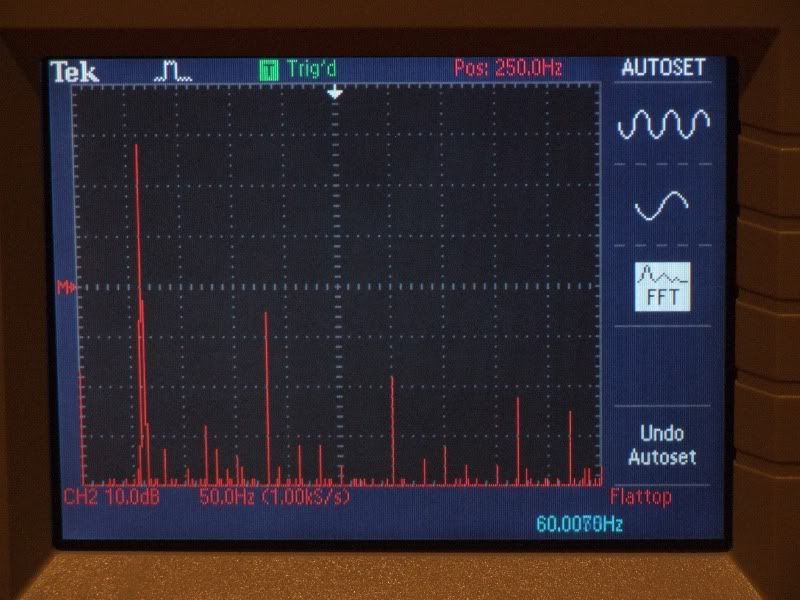
Figure 3. FFT plot of power coming from wall outlet for right side JC 1 amp.
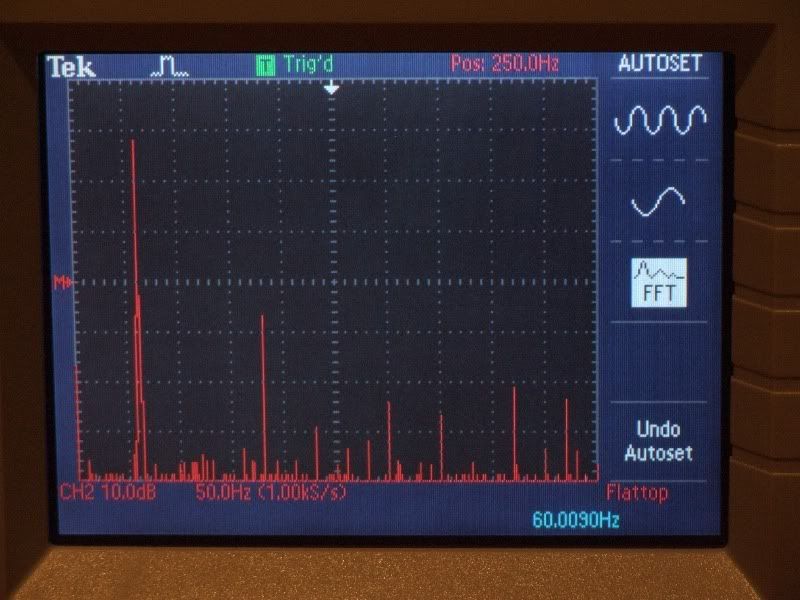
Figure 4. FFT plot of power coming from Statement SC power cord.
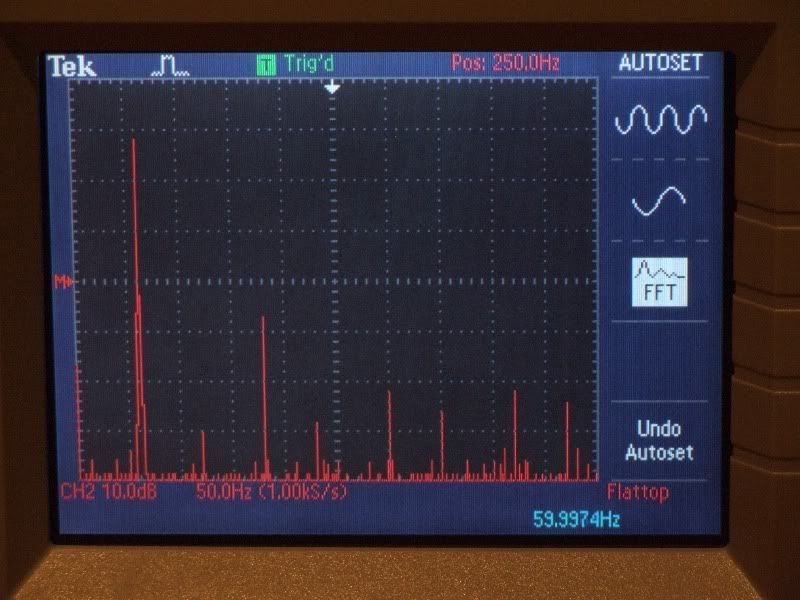
Figure 5. FFT plot of power coming from Premier SC power cord.
Both cords display a much lower and flatter noise power spectrum than the wall with a small reduction in the 3rd harmonic and significant reductions in the 5th and 7th harmonics. The Premier has a much lower and flatter noise power spectrum than the Statement.
The power spectrum (Fast Fourier Transform) plots from 0 Hz to 500 Hz for the wall socket feeding the Power Plant Premier (PPP) power regenerator, the PPP, and the Statement SC and Premier SC cords used between the PPP and the SACD player are given in figures 6 through 9.

Figure 6. FFT plot of power coming from wall outlet that feeds the Power Plant
Premier regenerator.
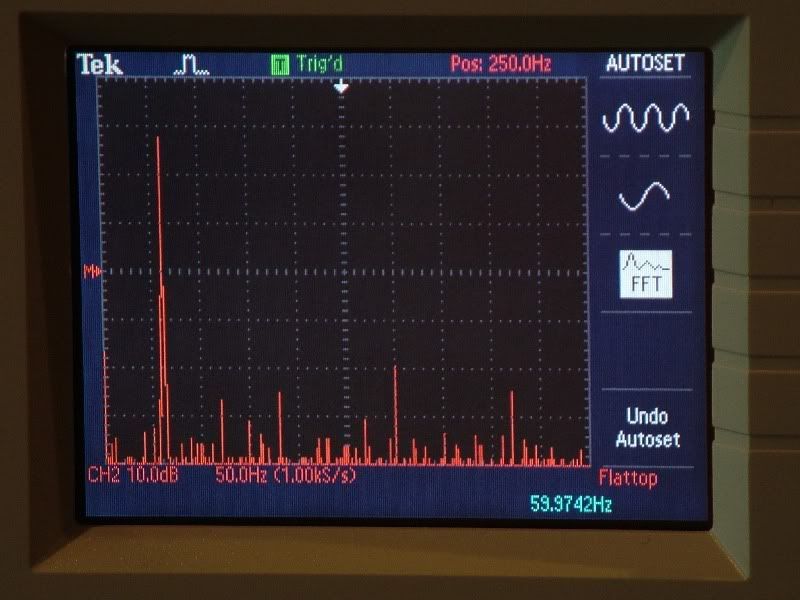
Figure 7. FFT plot of power coming from the Power Plant Premier regenerator.
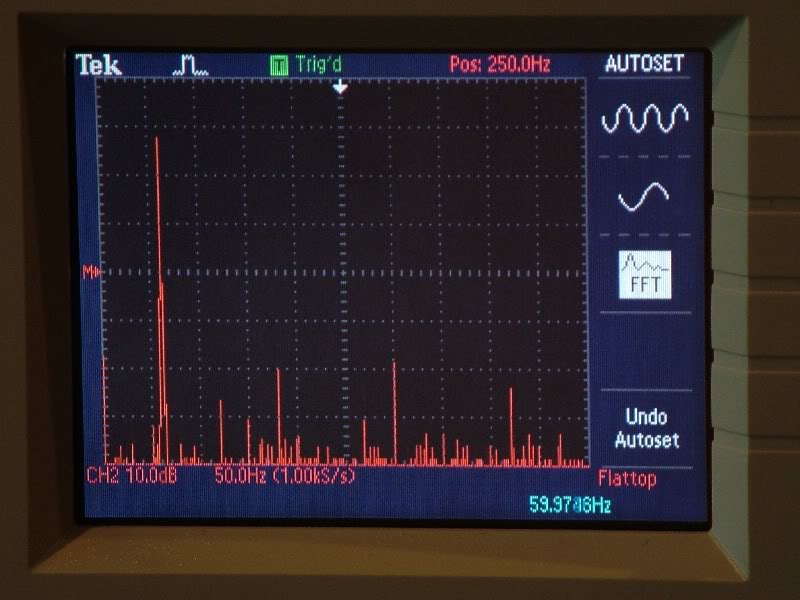
Figure 8. FFT plot of power coming from Statement SC power cord going to the SACD player.
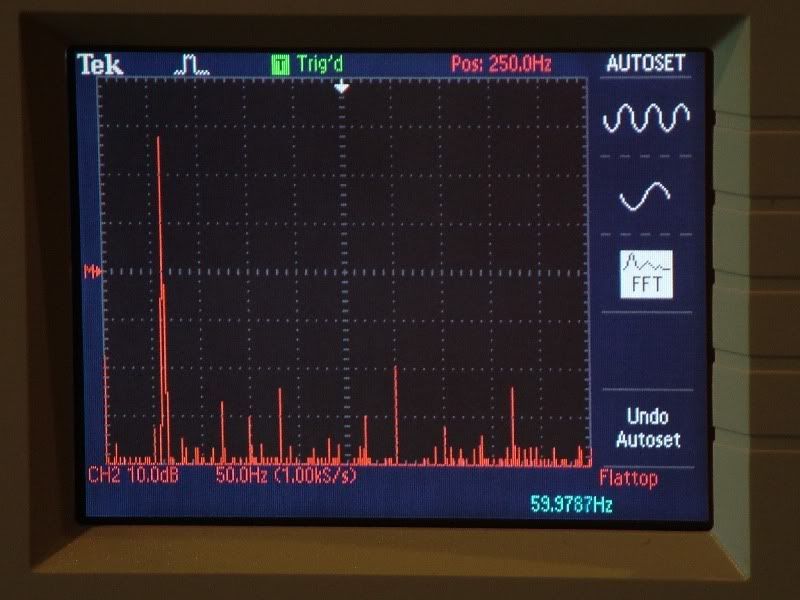
Figure 9. FFT plot of power coming from Premier SC power cord going to the SACD
player. No wonder you sound so good.
A summary of the voltage measurements corresponding to the FFT plots in figures 6 through 9 is given in table 1. The noise on this power circuit would be substantially less (an average 0.7% less) if the wireless networking equipment were not on.
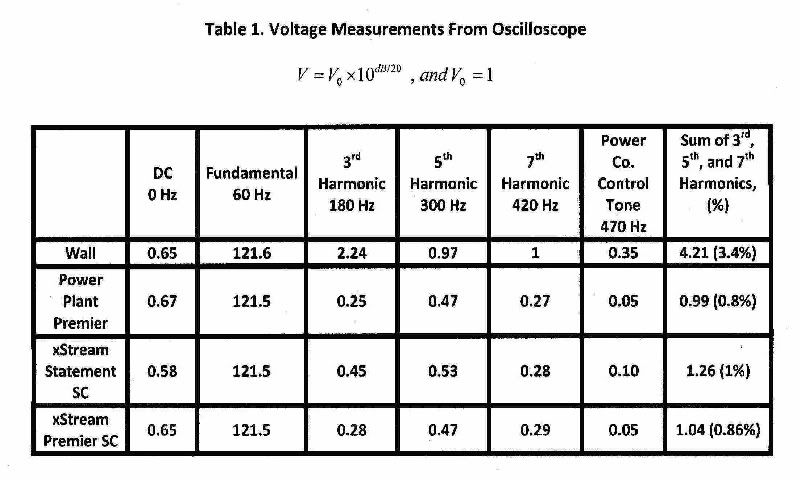
Again, the Premier SC had a much lower and flatter noise power spectrum than the Statement SC and it did a much better job of preserving the drastic noise reduction benefits of the PPP.
_____________________________________________
Associated Equipment
Pass Laboratories X0.2 Preamplifier
Pass Laboratories Xono Phono Preamplifier
Parasound Halo JC 1 Monoblock Amplifiers
Teres Audio Model 255 Turntable
Ortofon MC Windfeld Cartridge
Graham Phantom B-44 Tonearm
Cary Audio CD 306 SACD Player
Polk Audio SDA SRS 1.2TL Speakers
Audioquest LeoPard and Sky XLR Interconnects
Audioquest Everest Speaker Cables
PS Audio Power Plant Premier Power Regenerator For Source Components
____________________________________________
*Pure Copper by Ono Continuous Casting Process
PS Audio's best power cord, the xStream Premier SC, was evaluated against its second best, the xStream Statement SC.
Here are links to the previous parts of this series: Part 1, Part 2, and Part 3.

Figure 1. Two power line serpents face off.
Listening Evaluation Part 1 - Premier SC On Power Amps
A 2 meter Premier SC was compared to a 2 meter Statement SC's between my Parasound Halo JC 1 monoblock amplifiers.
Specs:
Effective Wire Gauge:Premier SC-7 AWG , Statement SC-8 AWG .
Construction: Premier SC-75% PCOCC* Copper, 25% Silver, Statement SC-PCOCC Copper. Both feature ferrite impregnated jackets with multiple shielding.
Weight: Premier SC-3.2 pounds, Statement SC-2.8 pounds.
Retail Cost (2m length): Premier SC-$1793, Statement SC-$629. The Premier is 2.85X the cost of the Statement.
The Premier SC took a while to settle down. Immediately after installation it was unpleasant to listen to: an overall veiled sound, bright "tizzy" highs, compressed sound stage height and depth, slow, muddy bass, diminished image weight and significant loss of bass tactility. The only good thing heard was the apparently louder sound which was evidence of a lowered noise floor.
After 8 hours, the tizzy highs were gone and the bass was more tactile, but the sound was still bad overall.
After 40 hours, I could stand to listen to my system again. I went back and forth between the Premiers and Statements and the Premiers had a bit more image weight and bass impact and the veiling and sound stage constriction was gone. At this point, I was not impressed and did not think the Premier's very modest sonic improvements justified their nearly 3X premium over the Statements.
70th hour-no change.
100th hour-no change. From my listening notes: "You're still not worth the extra money. Looking forward to sending you back."
124th hour. Things now get interesting when going back and forth between the Premiers and Statements. The Statements now sound veiled. I now hear more depth and previously unnoticed details with the Premiers. I put a Statement on the left amp and a Premier on the right amp. Images in the center were shifted slightly to the right with apparently much louder volume on the right. When I panned the balance control left to right, the sound pressure level meter registered the same for both sides, but the volume sounded significantly louder on the right. Some ambient information from the recording space was diminished or altogether missing on the left side. The Premier's bass was more tactile, heavier and articulate. With the Premiers on both sides, the sound stage was deeper with more layering and front to back space between images. The sound was more three-dimensional and holographic overall.
150th hour-no change. I decided to order 1.5 meter Premiers (for evaluation only
268th hour-going back and forth between the Premiers and Statements again. I'm trying to find a reason to keep the Statements, but I can't. Diminishing returns did kick in: the cost differential was nearly 3X but my sound stage improved only 2X.
I speculated that there would be a minuscule, if any, improvement by replacing the Statement SC between the wall and the Power Plant Premier regenerator. PS Audio confirmed this. When the additional Premier SC cables arrived, I didn't bother to test my hypothesis.
Listening Evaluation Part 2 - Premier SC On Source Components and Preamps
There wasn't a lot of unpleasantness this time. Listening to my analog and digital sources revealed heavier, more tactile bass but with less detail and articulation, further lowering of the noise floor, a bit more depth, a bit lowered sound stage height and more clarity and detail in the treble, but not more brightness. I noticed that some recordings that had sibilant vocals were more pleasant to listen to and that the sibilance was gone on some of them. Drums had a more natural sound.
After 50 hours, I went back and forth with the Premier SC and Statement SC on the SACD player. With the Premier, I heard a big improvement in the rendering of piano and synthesizer. They both took on a thicker, fuller sound with more note decay. Transients of drum licks were sharper. Three-dimensionalism was more enhanced to the same degree as when the Premiers replaced the Statements on the power amps. The sound stage height reduction and small loss of bass detail and articulation that I initially heard was now gone.
More improvement, yet still with diminishing returns. The nearly 3X the cost but only 2X improvement ratio was maintained. I tried to rationalize sending the second batch of Premiers back, but I couldn't do it because they provided $uch Good $ound.

Figure 2. Ok...you win...for now.;)
Measurements
Noise spectrum measurements were taken after listening evaluations were completed.
The power spectrum (Fast Fourier Transform) plots from 0 Hz to 500 Hz for the wall socket, Statement SC, and Premier SC used with the right JC 1 amplifier are given in figures 3 through 5. Everything except the large 60 Hz spike on the left is considered to be nasty, filthy, NOISE. Each vertical square on the plots represents 10 dB of amplitude. Each horizontal square represents 50 Hz of frequency.

Figure 3. FFT plot of power coming from wall outlet for right side JC 1 amp.

Figure 4. FFT plot of power coming from Statement SC power cord.

Figure 5. FFT plot of power coming from Premier SC power cord.
Both cords display a much lower and flatter noise power spectrum than the wall with a small reduction in the 3rd harmonic and significant reductions in the 5th and 7th harmonics. The Premier has a much lower and flatter noise power spectrum than the Statement.
The power spectrum (Fast Fourier Transform) plots from 0 Hz to 500 Hz for the wall socket feeding the Power Plant Premier (PPP) power regenerator, the PPP, and the Statement SC and Premier SC cords used between the PPP and the SACD player are given in figures 6 through 9.

Figure 6. FFT plot of power coming from wall outlet that feeds the Power Plant
Premier regenerator.

Figure 7. FFT plot of power coming from the Power Plant Premier regenerator.

Figure 8. FFT plot of power coming from Statement SC power cord going to the SACD player.

Figure 9. FFT plot of power coming from Premier SC power cord going to the SACD
player. No wonder you sound so good.
A summary of the voltage measurements corresponding to the FFT plots in figures 6 through 9 is given in table 1. The noise on this power circuit would be substantially less (an average 0.7% less) if the wireless networking equipment were not on.

Again, the Premier SC had a much lower and flatter noise power spectrum than the Statement SC and it did a much better job of preserving the drastic noise reduction benefits of the PPP.
_____________________________________________
Associated Equipment
Pass Laboratories X0.2 Preamplifier
Pass Laboratories Xono Phono Preamplifier
Parasound Halo JC 1 Monoblock Amplifiers
Teres Audio Model 255 Turntable
Ortofon MC Windfeld Cartridge
Graham Phantom B-44 Tonearm
Cary Audio CD 306 SACD Player
Polk Audio SDA SRS 1.2TL Speakers
Audioquest LeoPard and Sky XLR Interconnects
Audioquest Everest Speaker Cables
PS Audio Power Plant Premier Power Regenerator For Source Components
____________________________________________
*Pure Copper by Ono Continuous Casting Process
Proud and loyal citizen of the Digital Domain and Solid State Country!
Post edited by DarqueKnight on
Comments
-
Reserved For Follow Up.Proud and loyal citizen of the Digital Domain and Solid State Country!
-
You can consider a heavy gauge, well shielded power cord to be a refreshing rest stop for the electrons after their long journey from the power company's generating plant.:)Proud and loyal citizen of the Digital Domain and Solid State Country!
-
Thanks again!"He who fights with monsters should look to it that he himself does not become a monster. And when you gaze long into an abyss the abyss also gazes into you." Friedrich Nietzsche
-
Fantastic write-up DarqueKnight!

I replaced the AudioQuest NRG-5 that I had on my Aragon 8008x3 with a PS Audio Premier, and was tremendously impressed with the results. The weight and bass impact improved right away. As the cable settled in, air, detail, and harmonic "rightness" all improved in spades. I get the overriding impression that this is how Aragon intended their amplifier to perform.
It's a shame these cables are discontinued; the new PS Audio Perfect wave line does not have a silver option. Understandable, since it's probably not a fantastic time to introduce a +$1k power cable.
I ordered another one for my B&K processor, on which I am also currently using an NRG-5. I'll report back on the results next week. Party On :cool:
Party On :cool:
Jake
In the beginning, the universe was created. This made a lot of people very angry, and was widely regarded as having been a bad idea.
